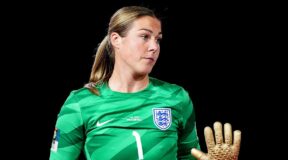Stanford and Arizona will play for the third time this season on Sunday (6 p.m. ET, ESPN/ESPN App) with the 2021 women’s national championship at stake. But while the title game matchup might have a familiar feel for the Pac-12 opponents, their paths to the final game of the season were anything but typical.
Arizona, a No. 3 seed, is playing in its first NCAA tournament since 2005, and had never before advanced past the Sweet 16. But with former Wildcats player-turned-head coach Adia Barnes setting the tone on the sideline, Arizona knocked off No. 1 seed UConn in Friday’s Final Four.
Stanford, the No. 1 overall seed, has been a contender since the season tipped. But in December the Cardinal were displaced by enhanced COVID-19 guidelines in Santa Clara County, forced to hit the road for a nine-week trip through six states. Along the way, Stanford gained and lost the No. 1 ranking but also celebrated a historic victory as coach Tara VanDerveer became the winningest Division I women’s basketball coach. The Cardinal beat fellow No. 1 seed South Carolina 66-65 in the national semifinals.
While Arizona seeks its first NCAA title, Stanford is chasing its third overall but first in 29 seasons. Will Sunday’s result be any different than their regular-season meetings, which Stanford won by a combined 41 points? Does the familiarity favor one team over the other? And which team will hoist the trophy? Our ESPN.com panel of Andrea Adelson, Charlie Creme and Mechelle Voepel weigh in.
Aari McDonald unquestionably needs another big game for the Wildcats to win Sunday. Who’s that player for Stanford?
Adelson: I have a feeling the unanimous choice here might be Haley Jones, who has lifted her play in the tournament as well. Her performance in Stanford’s semifinal win over South Carolina was punctuated with the winning shot, a beautiful jumper that put the Cardinal in position to win their first national title in 29 years. In all, she scored 24 points and hit 11 of 14 shots, and afterward Gamecocks coach Dawn Staley spoke at length about what a matchup problem Jones was for her team. South Carolina used post players to match up with her, hoping that would be a way to account for her size and ability to hit shots inside. But instead, Jones took advantage.
Arizona coach Adia Barnes has seen the improvement, too, as Jones has grown more comfortable within herself and with what Stanford likes to do best.
“She’s great in transition with her size and her ability to handle the ball, and so good around the basket,” Barnes said. “She doesn’t take 3s but she is so good at 2s, so good at transitions. That’s what she does and it’s hard to stop.”
Creme: My first instinct was Jones. She impacts the game in so many ways. But the more I thought about it, I landed on Kiana Williams. She’s the heart-and-soul of this team. Her teammates want this championship for their senior in her hometown almost as much as Williams wants it herself.
She didn’t have a great game statistically against the Gamecocks (eight points, 4-of-14 from the field), but Stanford’s best basketball came when she was running the offense. The point guard had zero turnovers in 40 minutes. She was also the only Stanford player to play the entire game.
When the Cardinal needed a rally against Louisville in the Sweet 16, the turnaround coincided with Williams recovering from a horrific start. As Williams went in that game, so did Stanford.
Voepel: VanDerveer has raved about Anna Wilson’s defense and leadership all season, and the redshirt senior guard has a chance to make an impact Sunday in trying to slow down McDonald. Of course they are very familiar with each other, as the teams are. And VanDerveer said there’s something kind of fitting about facing a league opponent in the final. It’s the seventh time teams from the same conference will meet for the women’s championship.
“This whole year has been so weird,” VanDerveer said of dealing with the COVID-19 pandemic. “To play a conference opponent for the national championship just fits in with the whole weirdness.”
Beyond the players mentioned above, who else needs to step up for each team? What were the X factors in their two previous meetings this season, and will that change Sunday?
Adelson: Most of the focus after the semifinals was on the way Arizona played defense on UConn, and rightfully so. But the one player I am interested in watching beyond McDonald and Jones is 6-foot-4 Stanford forward Cameron Brink, whose size and presence inside makes her a matchup advantage.
She had six blocks against South Carolina. In the first meeting between Stanford and Arizona, she had 5. If Stanford is able to take McDonald out of her game, the natural instinct would be to try to create inside. But if Brink is there swatting away shots, that is obviously a far more difficult proposition. What Brink has to work on is getting her blocks without getting into foul trouble. That has been a major concern, and a source of a few friendly chats with coach Tara VanDerveer throughout the course of the season.
“I pride myself on my defense, it’s probably my favorite part of the game,” Brink said. “I also feel like it’s what gets me in trouble a lot, so definitely need to work on not fouling as much and not getting too excited about blocking too many shots.”
Creme: In their two regular-season meetings, Sam Thomas was the only Wildcat other than McDonald to produce, totaling 26 points. On Sunday, Thomas or Cate Reese need to score.
But this is a defense-first success story. And while McDonald is the linchpin of Arizona’s defense, she’s not doing it by herself in the NCAA tournament. Without the physicality of Bendu Yeaney and Trinity Baptiste, the Wildcats aren’t the nation’s fifth-rated defensive team (per Her Hoops Stats).
Friday night illustrated just how important Lexie Hull is to Stanford. At times she couldn’t seem to make a layup, and she turned over the ball three times. But she just kept pushing. Despite shooting 2-for-15 on 2-point shots, she relentlessly went hard to the rim. It got her to the free throw line eight times, and she made each one. Perhaps more importantly, Hull had 13 rebounds, six of which were on that all-so-important offensive end.
Hull had 29 points and 13 rebounds combined in the two meetings with Arizona this season. Only Jones contributed more against the Wildcats.
Arizona never let UConn get into a rhythm. Is Stanford better equipped to handle the Wildcats’ smothering man-to-man defense?
Adelson: I think the Cardinal are better equipped for two reasons. No. 1, Stanford has obviously seen what the Wildcats can do and handled it well in their first two meetings — scoring 81 in the first matchup. It should be noted that Arizona has gotten much better as the season has progressed, and VanDerveer knows this and will have a game plan. But the other part of this is that Stanford played well defensively in the first two meetings as well, holding the Wildcats to fewer than 55 points in both games. So I would counter and ask whether Arizona can handle what Stanford presents defensively.
Stanford also has a more veteran group than UConn, with players who are not going to get flustered or out of sorts at the first sign of trouble the way the Huskies did. Look at what happened in the Louisville game. Nothing was going right for the first half — Stanford scored only 26 points and trailed by 10 at halftime. The Cardinal made adjustments, and by the end of the third quarter, they had scored 22 points and trailed by only 2, completing the comeback with a dominant fourth quarter. It feels as if Stanford has seen it all, and been through it all, this season. Weathering challenges, both off the court and on it, has made this a resilient group that knows it can’t take anything for granted. The Cardinal simply find ways to adjust.
Creme: Andrea nailed it. Having the experience of playing Arizona twice makes Stanford more equipped than UConn to handle what Arizona brings defensively. Geno Auriemma said after the Huskies’ loss that their scouting report on the Wildcats was extensive, even more in-depth than what they prepared for Baylor. Obviously, that’s all UConn could do, but no number of film sessions or note taking can replicate actually playing against Arizona’s defense.
That lineup versatility that we have written about so much this year also makes Stanford less vulnerable. Olivia Nelson-Ododa missed a couple of early layups for UConn, and then she was no longer a threat. Evina Westbrook seemed to lose her aggressiveness. Same for Aaliyah Edwards. At that point Arizona’s only real concerns were Christyn Williams and Paige Bueckers. The job got easier. Stanford has waves of viable options. It starts with Jones, Williams and Hull, but Stanford has so many options: Brink inside, Ashley Pretchel as a 3-point shooter or offensive rebounder, Hannah Jump from the outside and Fran Belibi (12 points in the first meeting with Arizona) on the inside.
McDonald has been projected as high as No. 2 and as low as No. 8 in ESPN’s three WNBA mock drafts since December. How has she improved her draft status over the past couple of weeks?
Voepel: McDonald has had a very good tournament, especially improving her shooting. Her defense was never anything but top notch. Dallas, which has four first-round picks, New York (even though it selected Sabrina Ionescu last year), Chicago and Seattle are all teams that could take a point guard in the opening round.
McDonald and Louisville’s Dana Evans will be at the top of that list, but we’ll also have to see if UConn’s Evina Westbrook, a draft-eligible junior, opts to make herself eligible for the draft. At 6-foot, she has size that McDonald and Evans don’t, and some teams value that a lot at point.
But if Westbrook stays at UConn, then teams most likely will be deciding between McDonald and Evans, and there are pluses for both. I think Chicago, especially, would love McDonald, but I’m not sure she will still be available by the time the Sky pick at No. 8.
Adelson: It is obvious McDonald is a player any coach would want on their team not only because she is supremely talented but because she can set the tone in a locker room with her work ethic, determination and leadership. “What makes her special,” Barnes said, “is her mentality.”
That is obviously a big part of it, but when you combine those intangibles with incredible speed, a varied skill set and a tenaciousness on defense, that also sets her apart. Specific to the NCAA tournament, McDonald has taken her 3-point shot to another level, going 18-of-37 in five games. To put that into context, she made a total of 18 3-pointers in her previous 13 games combined entering the tournament.
Creme: Earlier this season I wondered about McDonald’s WNBA ceiling. I didn’t think it was that high. I felt as though her speed would take her only so far and be mitigated by the rise in athleticism and experience she would face at the next level. I believed McDonald’s 5-foot-6 size would also limit her, and that all of those great finishes at the rim that she had in the Pac-12 wouldn’t be as possible against taller opponents. She has changed my mind.
Two things have become evident in the past three weeks. McDonald is more than a capable deep shooter. Sure, the sample size is relatively small, but the skill set is there. Her leadership was always there, but the ability to will a team this far takes that quality to an entirely new level. Franchises such as Dallas or New York, which are trying to remake their cultures and fortunes, could really use that kind of personality.
Which team will win the 2021 NCAA title?
The ESPN Basketball Power Index (BPI) says Stanford has a 71% chance to beat Arizona for the championship. Which team are you picking?
Andrea Adelson: Stanford
Katie Barnes: Stanford
Charlie Creme: Stanford
D’Arcy Maine: Arizona
Kevin Pelton: Stanford
Mechelle Voepel: Stanford
Royce Young: Stanford
Source: Read Full Article





